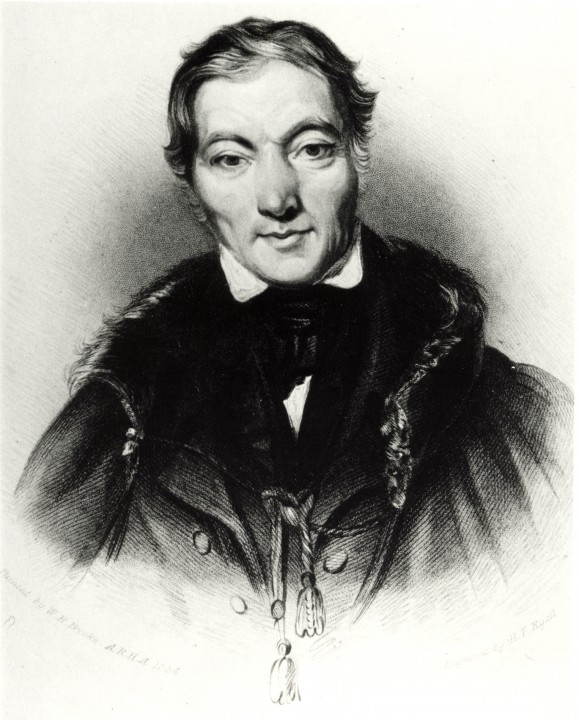Of all the names associated with early forms of co-operation, perhaps the best known is Robert Owen (1771–1858), the Welsh socialist and philanthropist, whose 250th birthday would be on 14 May 2021. He was an avid reader, a religious sceptic and a canny businessman – but importantly for co-operation, he was a believer in the human responsibility for the moral and physical condition of others. His views on worker conditions, education and economics were one of the foundations for co-operative thinking.
Robert Owen had drive, energy and honesty. At the cotton mills he owned in New Lanark (Glasgow), this was demonstrated by his experiment in philanthropic management; he didn’t advocate profit-sharing or the elimination of competition, but instead tried to reduce vice and punishment while improving living and working conditions, in return expecting an increase in output from the workforce – which numbered around 1,800.

In 1816, he reduced the working day from eleven and three-quarter hours to ten and three-quarter hours. He planned (but never realised) communal cooking and eating arrangements, and was an early pioneer of infant education, opening the Institute for the Formation of Character in 1816, which sought to “exclude punishment from education, to make learning interesting to young minds, and to encourage children to believe their own happiness to be dependent on that of others”. In his book, A New View of Society, or, Essays on the Principle of the Formation of the Human Character (1813–14), Owen demanded a system of national education.
Outside of New Lanark, he had growing concerns about national poverty, and in 1816 announced that “the chief object” of his existence would be to make universal the results of his experiments with the character of the labouring classes. It was the following year that he became less Owen the philanthropic “prince of the cotton-spinners” and more Owen the socialist. He spent time in London, attempting (unsuccessfully) to pass a bill prohibiting employment before the age of ten; to reduce hours of labour to ten and a half per day; and to require a minimal education to begin work. Around this time, he also began to cast himself in the role of a prophet both of a secular apocalypse, “the crisis”, and, in his mind’s eye, of the “new moral world” or “millennial world” which would succeed it, where laws, commerce, religion, war, and self-interest would disappear, leading to “the emancipation of mankind”. However, his reputation was hugely damaged by a series of disastrous public meetings in 1817.

In 1820, Owen wrote one of his most important works, the Report to the County of Lanark (1821), in which he proclaimed at length his belief that labour was the foundation of all value, a principle of great importance to later socialist thought. In the second half of the 1820s, Owen focused his energy on the prospect of building a community in America. New Harmony was briefly “the most vibrant and sophisticated cultural outpost on the American frontier”, but by late 1827 the experiment was in the final stages of dissolution. New Harmony was the main out of several concurrent attempts at Owen communities in the United States. Even though they all failed, they had a lasting influence as one of the first attempts at socialism in the country. There is still, arguably, a utopian vibe to the new muncipalism projects being carried out there now.
The 1830s saw the ‘sectarian’ phase of the Owenite movement: he formed the Association of All Classes of All Nations, later renamed the Universal Community Society of Rational Religionists (The Rational Society) which, by 1840, had over 60 branches of self-styled ‘socialists’, with 50,000 flocking to weekly lectures, among them the young German merchant Friedrich Engels. In late 1839, Owen began a new community called Queenwood on a 533-acre site designed for 700 members, but by 1844 Queenwoodhad bankrupted the Rational society, and organised Owenism ground to a halt.
The last decade of his life was dominated by his conversion to spiritualism in 1853. He died at the Bear’s Head Hotel in Newtown on 17 November 1858, and was buried with his parents, next to the abandoned church of St Mary’s, Newtown.
While others – such as Dr. William King (1786–1865) and the Rochdale Pioneers – took his ideas and made them more workable, practical and replicable, very early consumer co-operative societies were indebted to his ideas.
Where to read more by and about Robert Owen
By Robert Owen:
A New View of Society and Other Writings (Penguin Classics)
Robert Owen on Education ed H Silver (Cambridge Texts and Studies in the History of Education)
The Selected Works of Robert Owen, ed Gregory Claeys (Routledge, 1993)
Observations on the Effect of the Manufacturing System (1815)
Two Memorials on Behalf of the Working Classes (1818)
Report to the County of Lanark of a Plan for relieving Public Distress (1821)
An Explanation of the Cause of Distress which pervades the civilised parts of the world (1823)
The Revolution in the Mind and Practice of the Human Race (1849)
The Life of Robert Owen (1857, autobiography)
About Robert Owen
Lloyd Jones The Life, Times, and Labours of Robert Owen (1905, ed William Cairns Jones, Scholars Select, 2016)
RE Davies, Robert Owen, Philanthropist and social reformer: An appreciation (1907)
JFC Harrison, Robert Owen And The Owenites In Britain And America: The Quest for the New Moral World (1969, Routledge Revivals)
Gregory Claeys, Paternalism and Democracy in the Politics of Robert Owen (1982)
I. Donnachie, Robert Owen. Owen of New Lanark and New Harmony (2000, Tuckwell)
Robert A. Davis, Frank O’Hagan, Robert Owen (2010, Bloomsbury)
Ophélie Siméon, Robert Owen’s Experiment at New Lanark, From Paternalism to Socialism (2017, Palgrave)
Penelope Harris: Robert Owen and the Architect Joseph Hansom: An Unlikely Form of Co-operation (2020, Brewin)
Colin Laker, Robert Owen and Slavery (essay for Robert Owen Museum)

